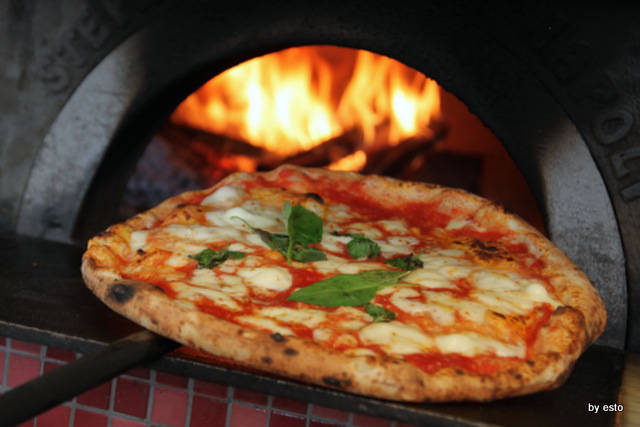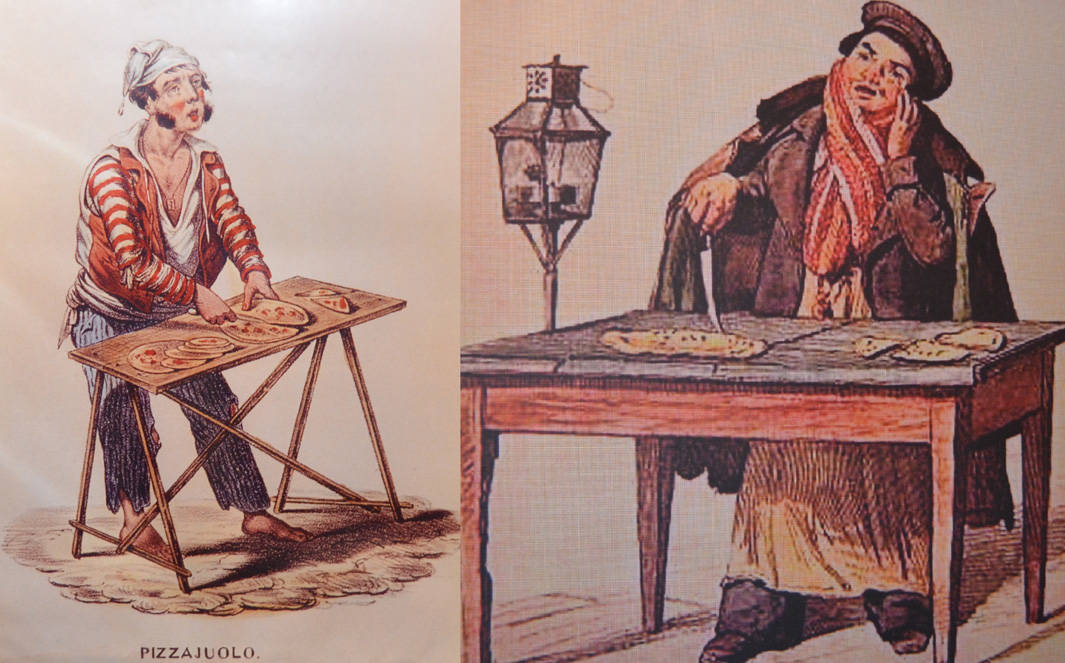The Modernity of Pizza: A Chat With Luciano Pignataro
Le Strade della Mozzarella (LSDM) is a traveling culinary congress, which offers an important showcase for Italian gastronomic excellence, from the highest quality products to the greatest chefs. The congress recently stopped in New York for a second consecutive year on June 28/29.
Two intense days saw a series of product presentations and culinary demonstrations with a particular emphasis placed on one of our most famous dishes in the world: pizza. Many personalities from the world of food were present including chefs, restaurant owners, journalists, and critics who livened up the various meetings and excited the American public.
Among these individuals was Luciano Pignataro, a writer and journalist who made the popularization of Italian culinary art one of his life missions. We met him at Roberto Caporuscio’s Kestè Pizzeria Wall Street on the second day of LSDM events, where he was the mediator for many presentations of pizza makers and Italian pizzerias who presented their specialties.
The Status of our Made in Italy
As Luciano Pignataro highlighted, Le Strade della Mozzarella is an extremely important showcase: “This is the second year that the LSDM is coming to New York. It’s a very important event because New York is home to the whole world and to the Italians, a population of emigrants. We export our Made in Italy here.”
The authenticity of the Made in Italy has become trendy over the past decade after a period in which not much attention was paid to the integrity of alimentary products, which were oppressed by industrialized production.
“Authenticity and the healthiness of products were lost a bit,” Pignataro told us, “but for about a decade now, many cultures, not only Italians, are placing value on the authenticity of products. In Southern Italy, where we traditionally have a culture of vegetables, seafood, and olive oil, we have a head start in this sense, and it’s these excellencies that we have the pleasure of promoting at events like LSDM.”
Southern Italy’s produce constitutes one of the most healthy alimentary regimens in the world. The Mediterranean Diet is our distinctive trait, and when we’re able to export our identity and our gastronomic uniqueness, we attract the attention of some of the greatest nations like America, which is a highly competitive market.
It’s important to defend this identity because even though it’s unique and distinctive, it can be easy to replicate. As Pignataro affirms: “Pizza and pasta are among some of the most well-known foods in the world, perhaps only Coca Cola is more popular. However, it needs to be understood that pizza can be replicated in styles and forms that are very different from the Italian ones. Spreading authenticity of Italian products is quite a job. This is why events like Le Strade della Mozzarella are necessary.”
Italian Pizza: A Very Modern Dish
Pizza in particular is becoming increasingly popular; it’s also becoming more and more of a chef’s dish, subject to various interpretations and experimentation. The distinctive trait of true Italian pizza must not be forgotten, and it also must not be forgotten how the tradition of Italian pizza can be modern. It’s important to understand the fine balance between an artisanal product like pizza, which has a specific history, and the possibilities of its modernization. Perhaps modernity is in the heart of the revitalization of the tradition and in the quality of the ingredients used, ingredients that in today’s complex economy have their own price.
“Pizza never lived such a beautiful moment,” Pignataro reasoned. “It was previously considered a food of the poor. It doesn’t exist as a word in the Vocabulary of the Accademia della Crusca Italiana, and it doesn’t even exist in the cookbooks of the great Neapolitan authors. In the last ten to fifteen years, there has been a great pizza relaunch. This reintroduction is explained by the fact that pizza makers and entrepreneurs understood that slightly increasing the food cost also meant increasing quality. Changing from seed oil to olive oil costs just 3 cents per pizza. Understanding this reasoning, these 3 cents become 50 cents, and the consumer, knowing that it’s a healthy product, is more willing to pay those 50 cents extra.”
This is reflected in a question of cultural growth, which clashes with the problem of an economic downturn: “In the Western world and particularly in Italy, for many reasons, there’s an obstructed system. The economic crisis that took place after the collapse of the company Lehman Brothers, caused the middle class, who spent 50 or 60 euro for a traditional restaurant, to almost disappear in Italy, while with 20 or 30 euro, a family can go to a pizzeria, even two or three times a week. This is an economic reason for pizza’s success. Also pizzerias are becoming more elegant and cool. I’m speaking in terms of interior design.”
Furthermore, entrepreneurs who come from other sectors are investing in pizzerias and employing great architects. This is happening right now in Naples for example, where new pizzerias are regaining some of their traditional decor, which was thought of in order to illustrate Naples through a 360 culinary experience. This immersion is particularly appealing for a foreign clientele.
Italian Pizza Schools
In Italy there are various styles of pizza, and not just the Neapolitan one. Each has equally significant traditions like the Roman school and the Venetian school, which are perhaps the two that have pushed the subject of leavening and the lightness of dough, creating well-defined styles.
“Surely the Roman style is traditionally more consolidated, but the Venetian style with its so-called pizza a spicchi is also, without a doubt, a very interesting interpretation,” Pignataro told us. “However, the model that’s working the most is the Neapolitan one. This is because the Neapolitan model is a model that identifies a specific community. Neapolitan pizza reflects not only the ability of some artisans but it also reflects a history. The Neapolitan dough is also very modern, hydrated, and elastic.
Pizzas like the Margherita or the Marinara are difficult to change or modernize because in their preparation, ingredients, and toppings, they have a perfect balance of elements that are hard to replicate in other forms. The Neapolitan journalist digressed to discuss pizza traditions to better illustrate this point: “It’s necessary to consider that to end up with Margherita pizza and Marinara pizza, it took two centuries of pizza evolution. They are formulas that are put to the test everyday by tens of thousands of pizzas and pizza makers. The taste of the Margherita is unique. The tomato and the flour with oil are combined in this intense but quick firing, for a minute or more. They find equilibrium and a mix of perfect taste. It’s difficult to find something just as perfect. In fact, the smartest pizza makers leave Margherita and Marinara pizzas unchanged, and they experiment with other pizzas.”
What about the American Taste?
There’s no doubt that true Italian pizza that’s professionally cooked and prepared has become very sought-after by Americans. Neapolitan pizza is perceived as an extremely tasty dish. It’s nutritious, light, and goes hand in hand with the new green and healthy taste of modern Americans. It’s also true that this pizza doesn’t exclude the classic American junk food pizza. “The Americans are very pragmatic,” Pignataro reasons. “For example, the other day Rosario Procino from Ribalta (a famous Neapolitan pizzeria in New York) told me that Americans come to him in order to eat authentic Italian pizza that costs a bit more but is high quality. But when the typical American leaves the office on his break for a quick bite, he will still choose his junk food pizza.”







































i-Italy
Facebook
Google+
This work may not be reproduced, in whole or in part, without prior written permission.
Questo lavoro non può essere riprodotto, in tutto o in parte, senza permesso scritto.